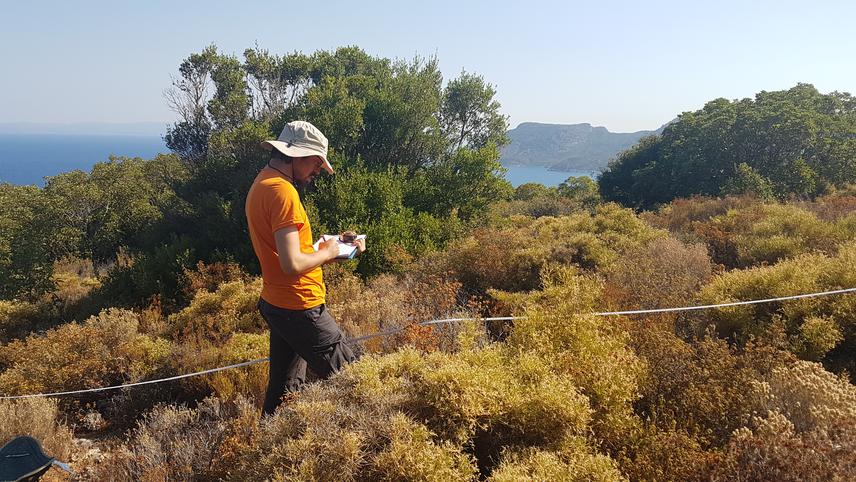Social media video featuring the project.
İrem Tüfekcioğlu
Other projects
Maquis vegetation is a type of Mediterranean shrubland comprise high diversity of plant and animal species. Since the forestry law in Turkey doesn’t count maquis ecosystems as part of forest land, forestry management plans don’t consist any forestry implementation on maquis in terms of conservation. Therefore it is important to conduct detailed fieldwork on different maquis habitat types to reveal woody plant diversity. The results will share with related authorizes and prepare a technical report including suggestions on conservation implications.

Image 1
Maquis vegetation is a type of Mediterranean shrubland that expands in the south and west of Turkey, and forms its own habitat as well as grows in the red pine (Pinus brutia) forests as understory. According to the General Directorate of Forestry in Turkey, maquis occupies about 6 million hectares, nearly 30% of the Turkey’s forest lands. Despite its integral extend as regards to temporal and spatial distribution, the lack of recognition of maquis habitats in forestry leads to a deficit in habitat conservation.

Image 2
The forestry law in Turkey doesn’t count maquis ecosystems as part of forest land. Therefore forestry management plans don’t consist any approaches on maquis in terms of conservation. Moreover, awareness regarding ecological functions of maquis in terms of biological diversity as well as its resilience and resistance to changing climatic conditions are limited and so the knowhow on maquis conservation practices. This problem should be put on the table and conduct a research on biodiversity of maquis habitats, thus it can be developed new conservation approaches to preserve maquis vegetation and integrate into the forestry management plans. It is very important identifying biodiversity value for different classes of maquis habitats to carry out an extensive evaluation.
The output of the study particularly the data collected by the fieldwork will form the basis of the method to be developed for the protection of maquis habitat. A novel maquis conservation approach based on our data will be developed and proposed to the forest management authorities for integrating into the business-as-usual forestry planning, implementation and monitoring cycles. Since the study is intended to be integrated to the existing forest management practices, it will be carried out with a strong participation of both the forest authorities and local communities to ease the integration process. The consultation meetings with the forest authorities and local communities will contribute to increase awareness on the ecological functions and significant woody plant biodiversity of maquis habitats.
The outcomes of the project will constitute a model approach for the integration of maquis vegetation to forestry plans and practices throughout Turkey. I believe, therefore, this approach will be a strong tool for the successful conservation of maquis vegetation in Turkey in long-term.
This work will offer opportunities to train study team members during the project, and consequently will create a motivated group of people from various disciplines that have the experience on fieldwork, project management, meeting organization, technical report preparation, and communication skills with local people.